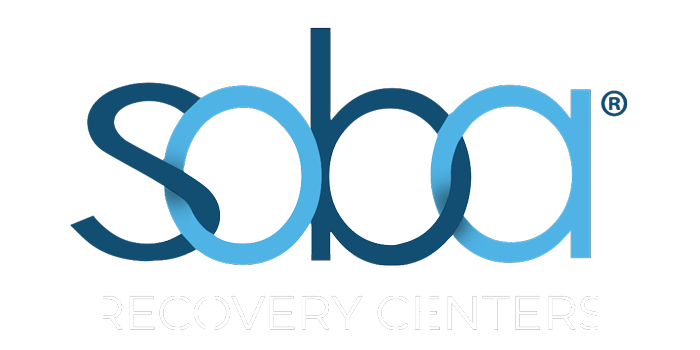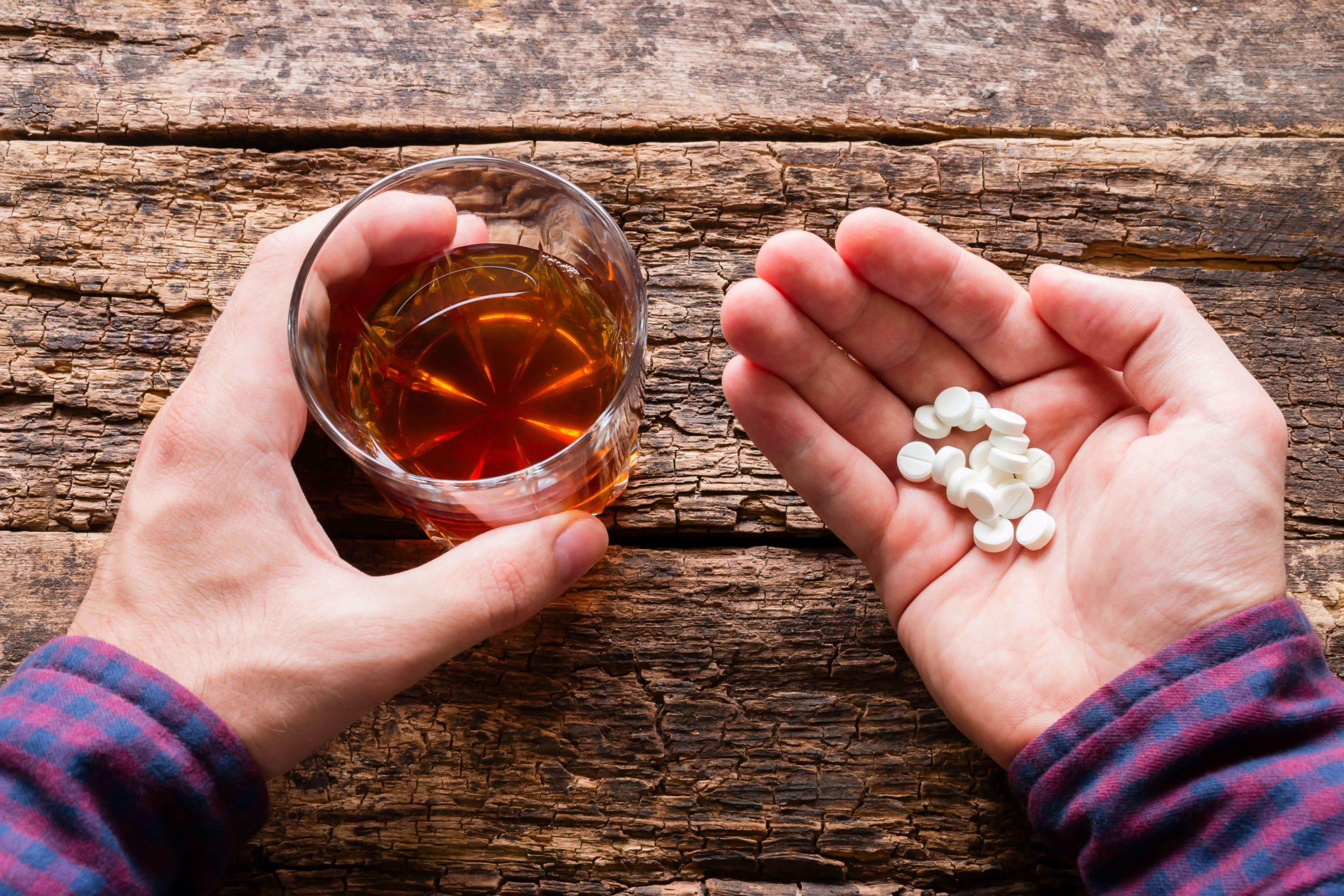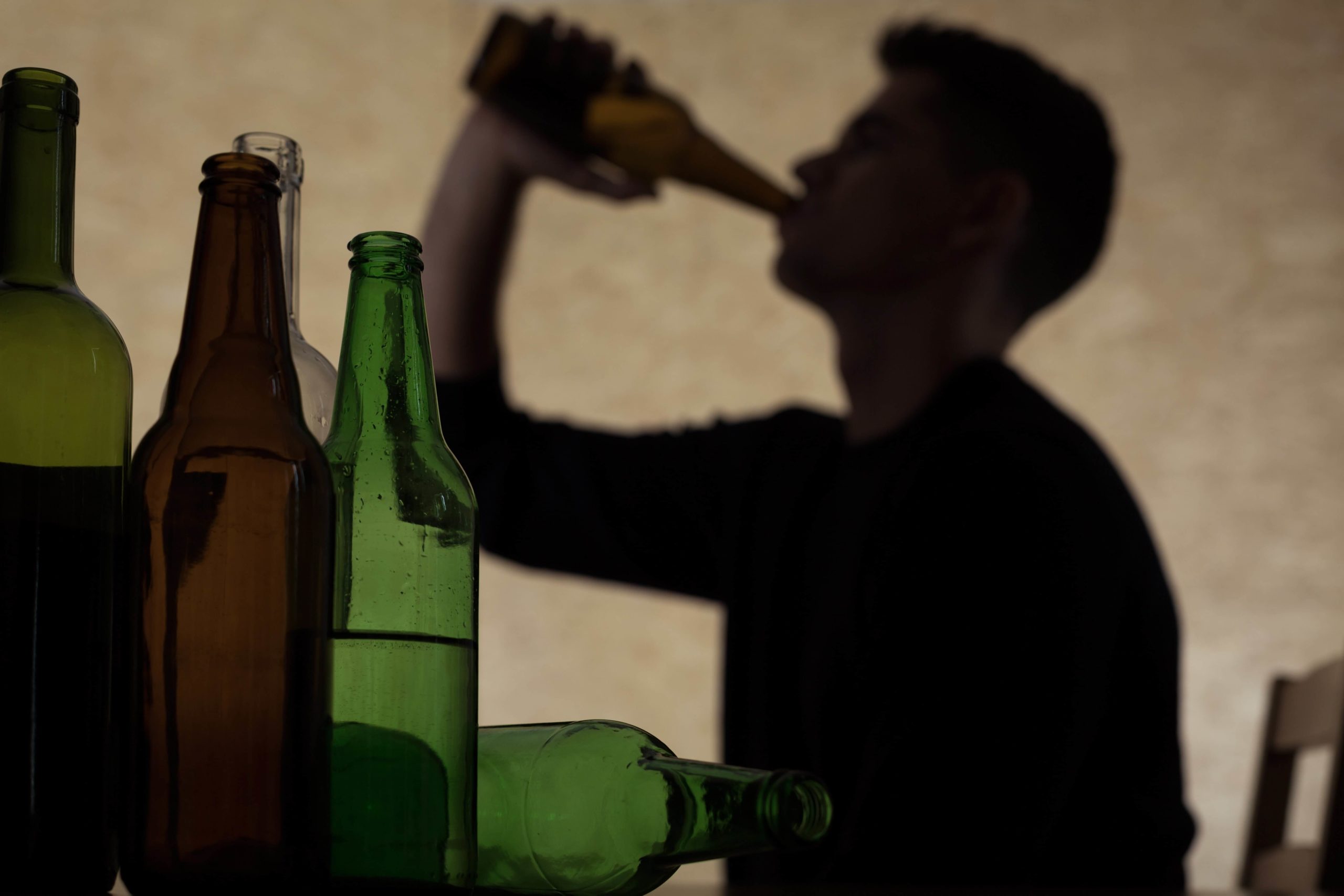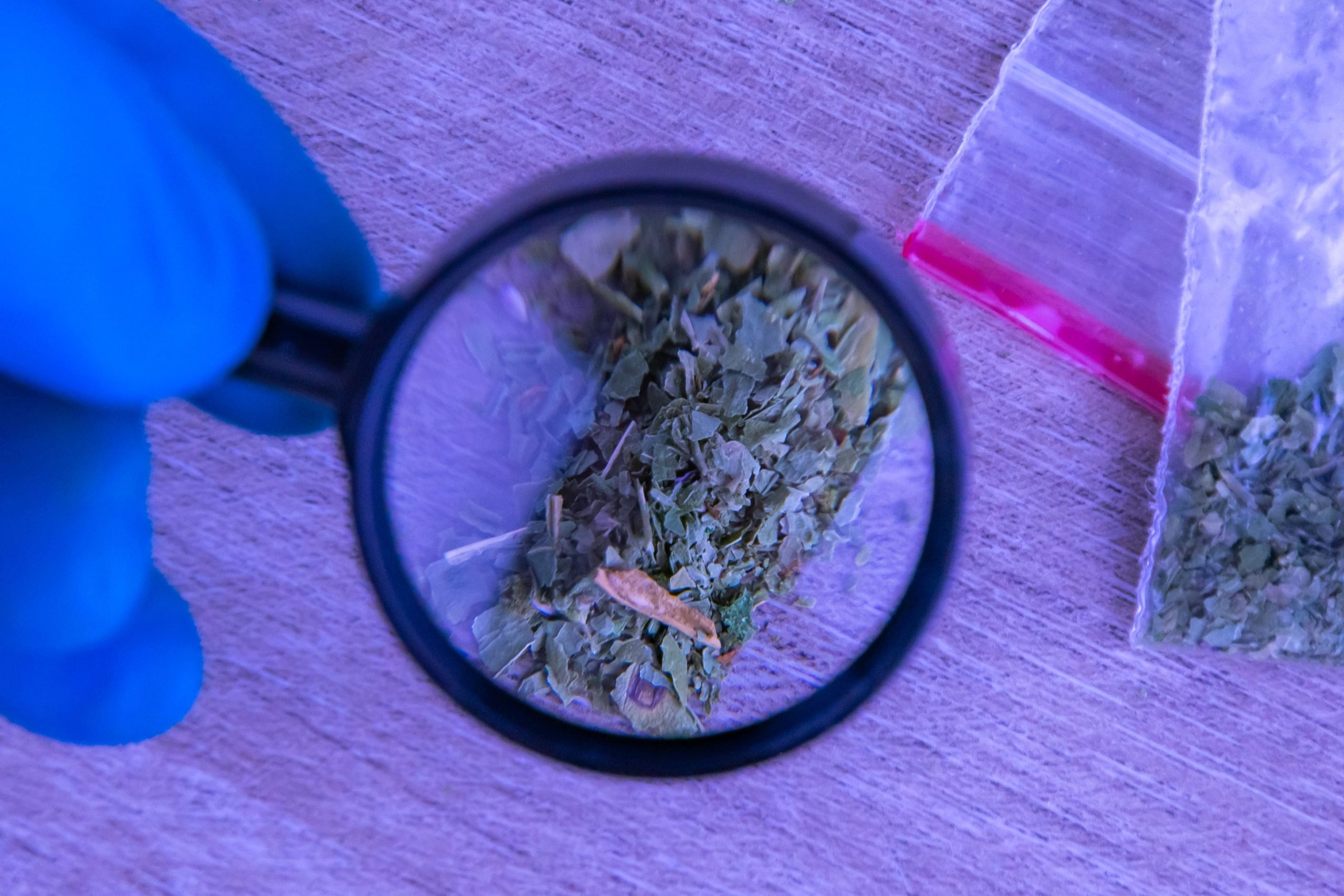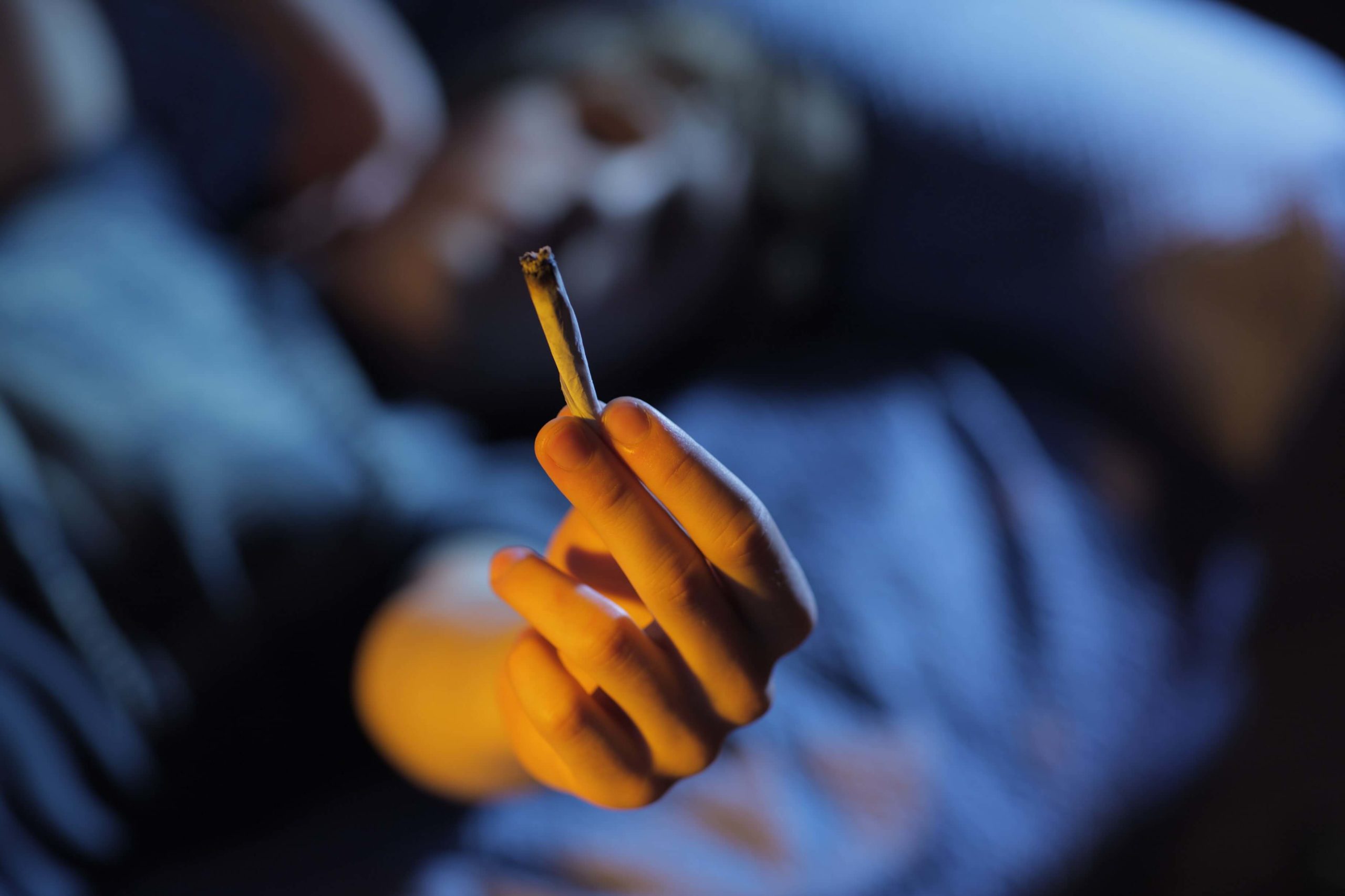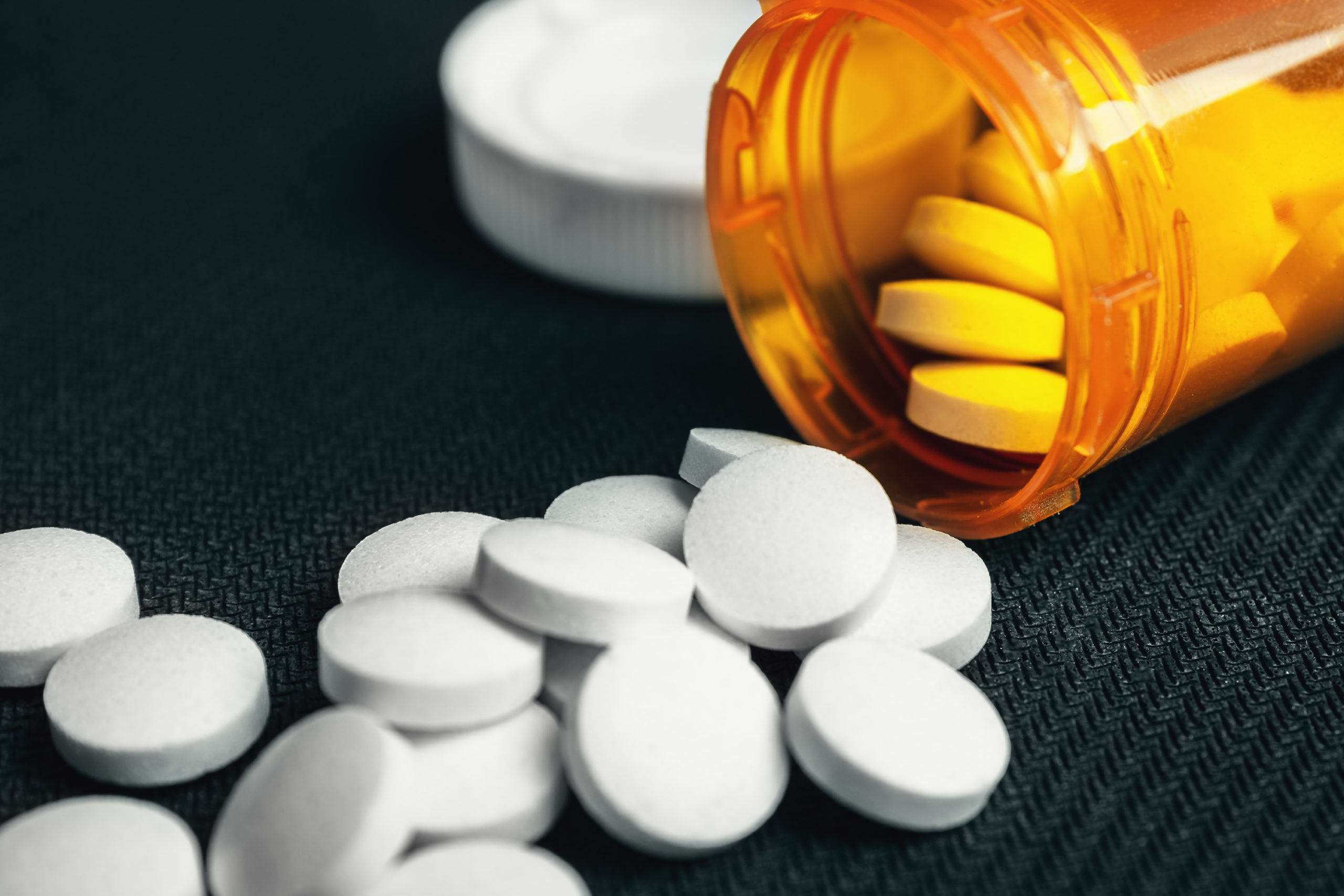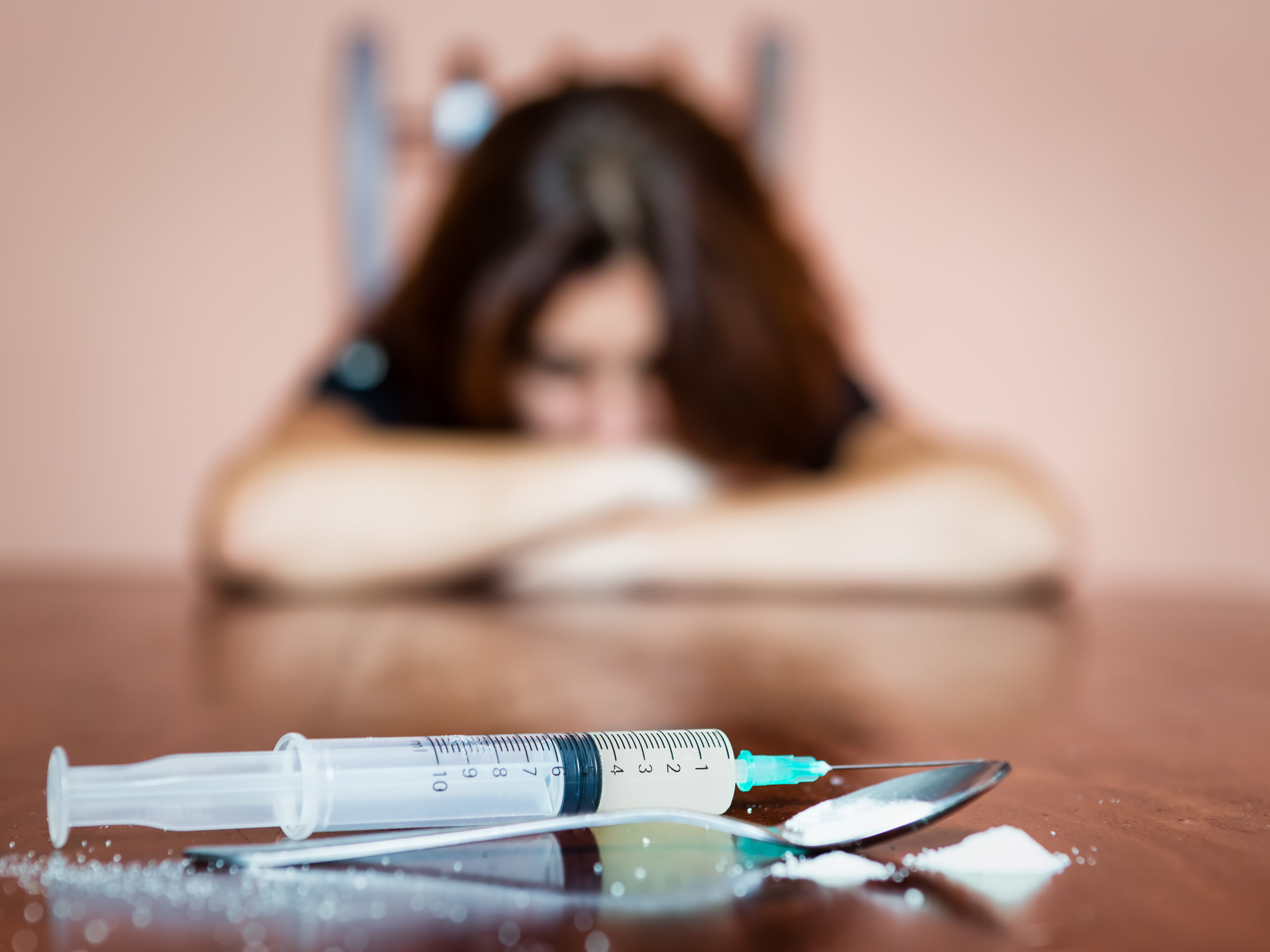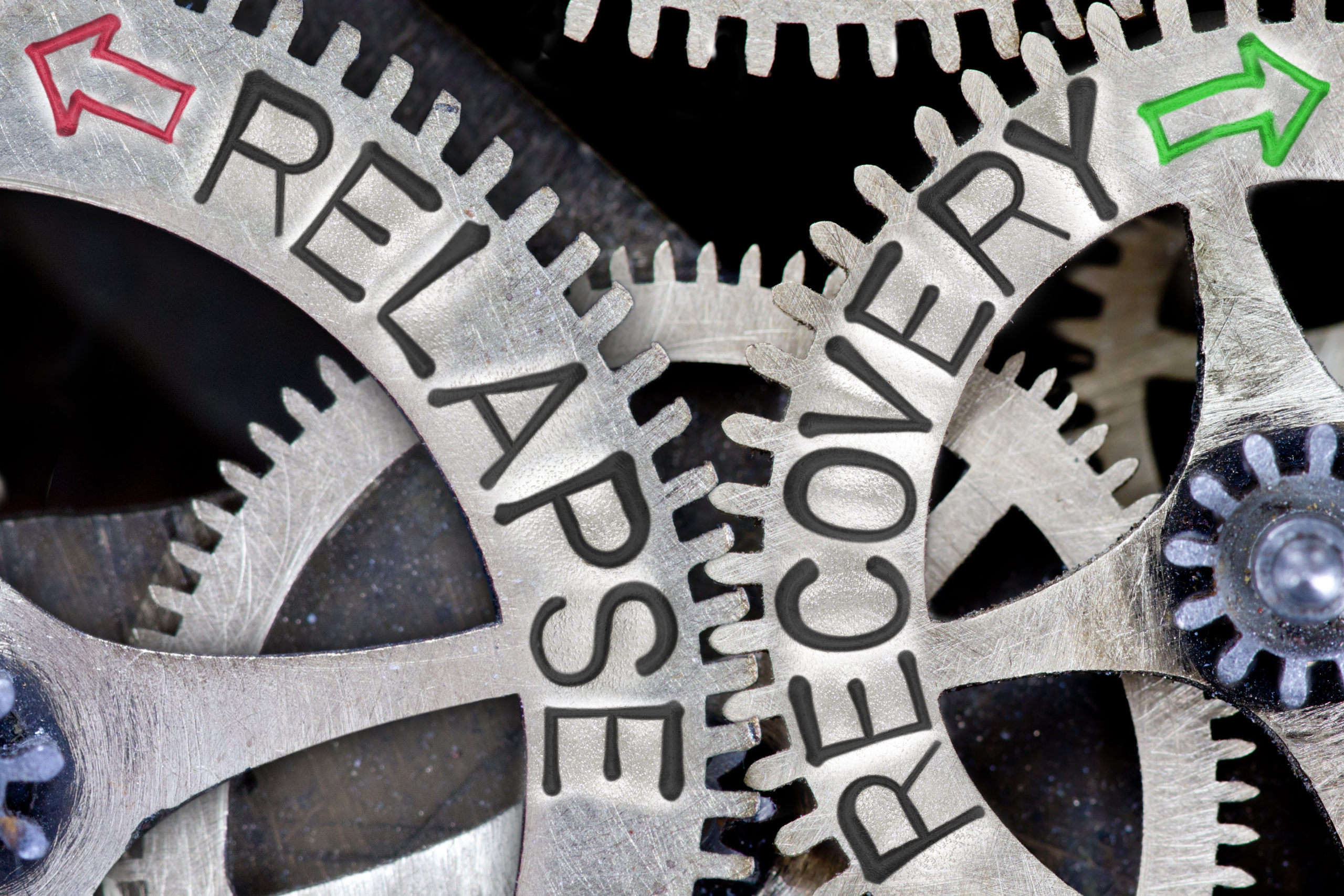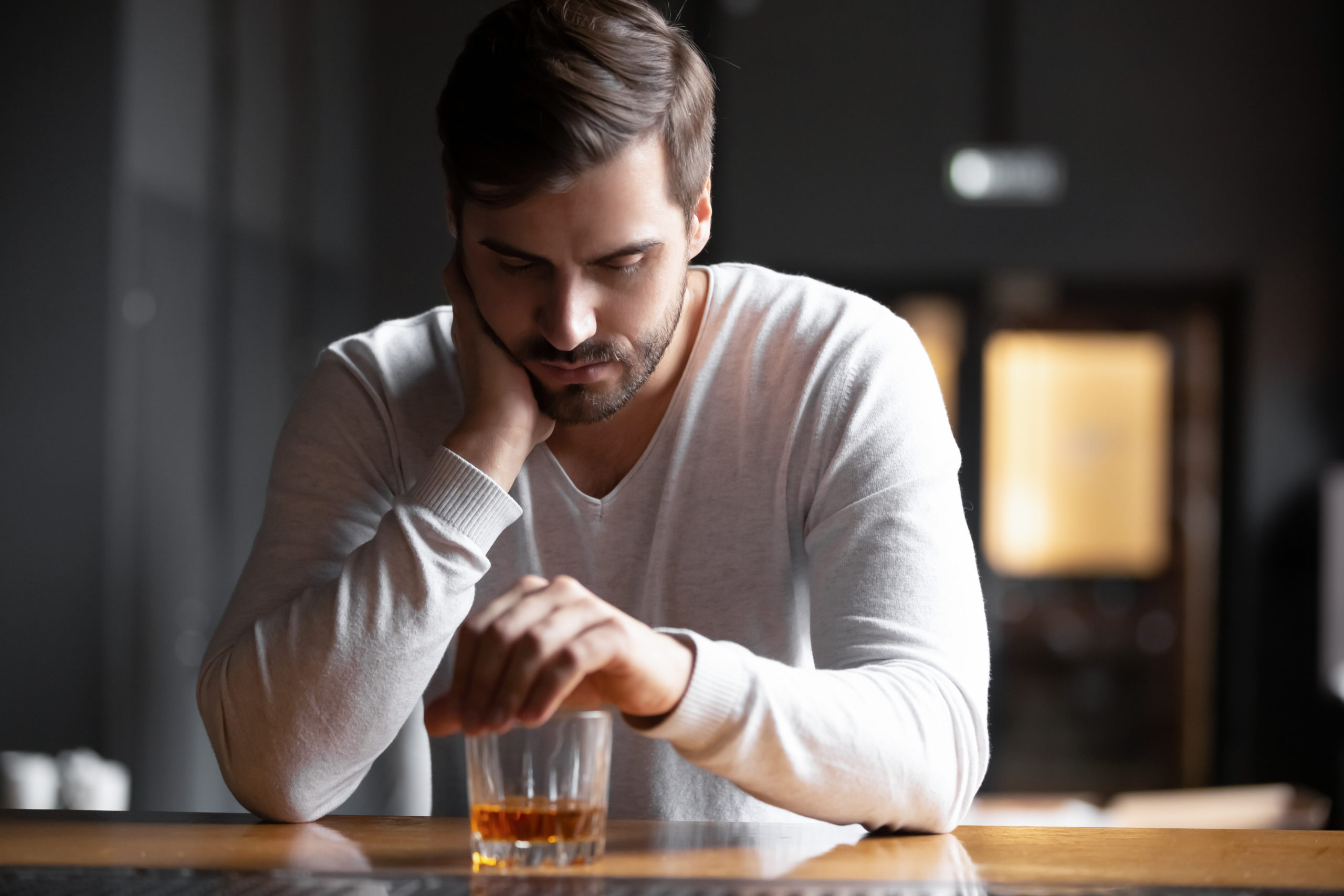Both alcohol and benzodiazepines can harm the body, but the damage increases when the two substances are combined.
Continue readingThe Difference Between Problem Drinking and Alcoholism
Even though both groups of drinkers have an unhealthy relationship with alcohol, problem drinkers and alcoholics aren’t the same.
Continue readingHow Addictive Are Synthetic Drugs?
Many people mistakenly believe synthetic drugs are less dangerous because they’re made in a laboratory, but these drugs can still pose a serious threat to users’ health.
Continue reading6 Steps to Reduce — Then Stop — Your Marijuana Use
Last year, the number of Americans who used marijuana nearly doubled. Out of the 48.2 million Americans who used marijuana in 2019, approximately 10% of them became addicted to the substance. Although many states continue to legalize marijuana, using the substance remains a potentially addictive habit. Luckily, reducing—and ultimately eliminating—your marijuana use can help you minimize your risk of addiction and lessen some of the substance’s most adverse effects.
The Effects of Marijuana
Marijuana, also known as “cannabis” and “weed,” is one of the most commonly used addictive substances in America. When first consumed, marijuana can make you feel relaxed, joyous, free of pain, and temporarily euphoric. However, using marijuana can also have some negative impacts on your health, which can include:
- Permanent IQ loss
- Respiratory problems
- Memory difficulties and cognitive impairments
- Increased risk of anxiety, depression, and mood swings
- Weakened immune system
- Increased risk of cancer
6 Practical Ways to Stop Marijuana Use
If you want to effectively stop your marijuana use, you need to take practical steps toward your overall goal. For many individuals, quitting “cold turkey” can be harmful and disruptive. One of the most effective ways to quit instead is to understand your current usage, take steps to slow your consumption and seek professional help. Here are a series of steps to help you get started.
- Talk to your doctor about your desire to quit. You won’t effectively reduce your marijuana use without support and guidance. Before speaking with your doctor, try recording how much marijuana you consume on a regular basis by writing down your usage. You can even add a bar or line graph in your written record which can visually show you whether you’re reducing, increasing or maintaining your marijuana consumption. When you visit your doctor, discuss ways that you can reduce this number and ultimately abstain altogether.
- Publicly commit to stop using marijuana. One of the most effective ways to cut back on your marijuana usage—and ultimately stop consuming the drug altogether—is to work with an accountability partner. This may be a friend or a loved one who is already sober or someone you know and trust. Publicly commit to stop using the drug and ask them to hold you accountable through regular check-ins.
- Choose an alternate activity. Commit some of the money and time you typically spend consuming marijuana and do something else. Buy new clothes or shoes. Take a trip. Purchase a gym membership. Go see a baseball, basketball, or football game. Spend time with friends and loved ones. Whatever the activity you choose, make sure you surround yourself with people who aren’t going to use marijuana in front of you.
- Once you’ve begun to taper, seek professional treatment. Now that you’ve taken steps to reduce your marijuana usage on your own, you can take the next step to ultimately remove marijuana from your life entirely. Seeking professional help from a therapist, doctor, or licensed addiction treatment professional can ensure you’re able to fully quit.
- Find a support group. One of the most effective ways to stay marijuana-free for the long term is to find a group of like-minded individuals who are also getting sober. Ask your addiction treatment provider for a recommendation of a suitable group near you or visit a local Narcotics Anonymous (NA) meeting for a free, confidential source of support.
- Enlist trusted friends to hold you accountable. Find a trustworthy, reasonable person in your life who will ensure that you take the necessary steps to cut down on your marijuana consumption. Make sure this person is comfortable establishing strong boundaries and enforcing your desire to use less marijuana and ultimately quit.
Helping You Reach Your Recovery Goals
Here at Soba, our mission is to help you reach your recovery goals. When you’re looking to quit marijuana, we’re here for you. Our wide range of treatment services can help support you wherever you are on your recovery journey. Don’t spend another day trying to figure out sobriety and recovery on your own. Let us help you. Take action by contacting us today if you or a loved one are looking to get a better handle on your use of marijuana or any other kind of addictive substance.
How to Maintain Sobriety Through Stressful Times
If there’s one thing that can test the strength of your sobriety, it’s stress. The world is a stressful place, and it’s practically impossible to find a single person on this planet who isn’t worried or anxious from time to time. Unfortunately, stress is one of the biggest factors of alcohol and drug abuse by far. Emotional and mental stress can make it difficult to follow through with routine responsibilities to your family, friends, and employer. Physical stress like pain or an injury may add a deeper element that challenges your commitment to addiction recovery.
When life gets tough, we often feel alone in our experiences and become desperate for fast relief just to keep going. But substance abuse only makes things tougher in the long run, and many people suffering from addiction end up abusing substances more and more just to try and regain some small level of comfort.
Fortunately, life doesn’t have to be this way. With over 20 million people (over 10 percent of adults) suffering from addiction each year in the United States, you’re not alone in your experiences. Furthermore, with the right addiction treatment program, many people can both obtain sobriety and learn healthy coping skills for addiction recovery that can help them through stressful times.
You can’t eliminate stress from your life, but there are ways you can manage it more efficiently. Here are several time-tested techniques you can use to keep stress levels at bay without relying on unhealthy activities for relief.
Succeeding at Addiction Recovery When You’re Stressed
Here’s one quick tip to get you started: controlling your reaction to stressful circumstances can lead to instant relief and is far more effective than trying to find a quick fix for a long-term problem or a situation that is out of your control.
1. Spend Time with Yourself Every Day
Staying in touch with your deeper emotions and thoughts can help you react in a more positive manner when stressful situations arise. Commit to doing one or more of the following for up to an hour every morning or just before bed:
- Journaling – Get a pen and paper or open a blank document on your computer, and simply start writing whatever comes to mind. You can set a timer and challenge yourself to keep writing until your time is up or write two to three pages daily. As you write, you will focus on what’s stressing you out and on your deeper thoughts that often go unacknowledged in daily life. You will start to solve problems and stumble upon powerful realizations if you’re consistent in your journaling.
- Guided Meditation – Research has found that mindful meditation eases psychological stress. Depression and anxiety are symptoms of that type of stress and can easily set in during the addiction recovery process. The easiest way to start meditating is to find a guided meditation soundtrack or download an app or podcast that offers meditation tracks. Get into a comfortable position, close your eyes, and focus your mind on the track.
- Gratitude Journaling – Write down five or more things that you’re thankful for each day. You can add that into your journaling practice or just do it on your phone when you have a few minutes to spare during your day. Focusing your mind on the blessings in your life will help you maintain a more positive mindset.
2. Use Breathing Techniques
There’s a lot you can do to lower your stress levels in general, and we’ll get to those in just a moment. When your stress levels are spiking at the moment though is when you need the most help, because this is when you are most likely to want to turn to drugs or alcohol for relief. Using focused breathing techniques has been shown to help calm you down and bring your stressful thoughts back to a more grounded state. Find somewhere comfortable to sit if possible, and shut your eyes so you don’t have any visual distractions. Take long, deep breathes, focusing on filling your lungs to capacity with air and then slowly releasing it all out. Do this for as long as you need to.
3. Incorporate Exercise and Aerobic Activity into Your Daily Life
 While exercise may feel difficult and stressful when you first start, it will eventually become a piece of the sturdy foundation that roots you in healthy addiction recovery. Even milder physical workouts have been shown to be almost instant stress relievers. Incorporating regular exercise into your weekly schedule will also help lower your stress levels over time as well as keep you occupied. This is especially important, as keeping busy with physical tasks (like working out) will leave you with fewer “empty moments” where you may otherwise feel urges to use substances.
While exercise may feel difficult and stressful when you first start, it will eventually become a piece of the sturdy foundation that roots you in healthy addiction recovery. Even milder physical workouts have been shown to be almost instant stress relievers. Incorporating regular exercise into your weekly schedule will also help lower your stress levels over time as well as keep you occupied. This is especially important, as keeping busy with physical tasks (like working out) will leave you with fewer “empty moments” where you may otherwise feel urges to use substances.
Aerobic activity is anything that increases your heart rate, gets you sweating, and requires you to control your breathing and exertion.
Whether you decide to try water aerobics, Zumba, running, fitness walking, or cycling, routine aerobic exercise will help you relax while boosting your mood and allowing you to clear your mind of stressful thoughts. You may even find that your exercise sessions spark flashes of creativity that help you solve problems that have long been sources of stress for you.
4. Get Outdoors
According to the American Institute of Stress, getting outside and into nature has also been shown to help reduce stress levels almost instantaneously. Try looking up local parks or nature walks ahead of time so you have a destination in mind the next time you’re starting to feel overly anxious or frazzled. Likewise, spending time outdoors on a regular basis will help lower your general stress levels in the long run.
5. Avoid Stressful Triggers
Does reading or watching the news get you all stressed out? Do you have an exhausting work schedule or a relationship that may be toxic? Some things that stress you out are easy to avoid, while others may take a firmer stance. Nevertheless, it’s important to take steps in reducing your exposure to these stressful triggers. If a relationship (either personal or professional) may be stressing you out constantly, talking about your issues can sometimes help. If it does not, then it may be time to end the relationship and move forward into less stressful situations.
6. Practice Gratitude
Sobriety is far from the only thing that will help keep your life in recovery stable. It’s all about attitude. Studies have shown that actively focusing on the people, experiences, and objects you are grateful for every day can help you find joy in the little things. With this, stress levels decrease and general contentment wins over. Focusing on things you are thankful for having in life is also a good practice for whenever you do start feeling anxious or stressed out. Some people even make a list of these things and carry it around with them for such occasions.
7. Make Your Sleep Routine a Habit
When you look into the correlation between sleep habits and stress, the following facts stick out:
- Sleeping an extra 60-90 minutes per night would make most Americans healthier and happier.
- Many Americans report feeling more stressed when the length or quality of their sleep decreases.
- Americans report feeling even more stressed if they don’t get enough sleep during stressful times.
- The side effects of sleep deprivation can mimic signs of extreme stress, including irritability, fatigue and lack of motivation
Have you heard of the sleep-stress cycle? It’s a cycle in which stress interferes with sleep, and then inadequate sleep leads to more stress, which makes it even harder to sleep. You can break the cycle and control your stress by going to bed and waking up at the same time every day. Yes, that includes weekends. Make sure your schedule allows you to get at least seven hours of sleep each night.
8. Minimize Overwhelm by Tackling One Goal at a Time
If you’re concerned that stress will sabotage your addiction recovery, it doesn’t make sense to create more stress for yourself. You may have a lot that you want to accomplish as you get your life back on track, but don’t try to do it all at once.
Try writing down all of your goals, and then listing them in order of priority. Put goals that energize and excite you at the top of the list because they will motivate you the most. The more you have to look forward to, the more likely you are to maintain your sobriety.
9. Don’t Bottle Up Your Stress
The worst thing you can do during addiction recovery is pretending that you’re okay when you’re not. When stressful situations arise, reach out to family and friends who are aware of your commitment to sobriety. Just venting to someone who knows about your struggles can help you see the situation in a new light, altering your reaction to the stressful situation quickly.
10. Don’t Be Afraid to Reach Out
Reaching out to others and talking through the things that are stressing you out can also prove to be quickly relieving. This is one reason why many people in addiction recovery still attend regular support group meetings and keep in touch with their rehab program. Focusing on building a strong support network of family and friends will also give you people you can rely on as an outlet for life’s problems.
You can also reach out to the trained and compassionate professionals at Soba Recovery Center when stress becomes too much to manage on your own. We’re always one call away, so never suffer in silence.
If you’re still trying to reach life in recovery, it’s important to know that you don’t have to face addiction alone. Our team of substance abuse professionals at Soba Recovery is here to help you through detox and addiction treatment safely and avoid falling back into relapse. In our luxury treatment center, you can start building the healthy, productive life you deserve.
Everyday life will still come with stress, but we can help you learn to cope effectively without turning back to drugs. Get in touch with us when you’re ready — change can start today!
The Truth About Prescription Pill Addictions
Prescription pill addiction involves more than just opioids and other pain medications. There are four broad classes of prescription pills that are commonly abused. These include opioids, benzodiazepines, sedatives, and stimulants. Although many who are prescribed prescription medications take them properly, there is still a substantial portion of the population who misuse them, resulting in addiction and the need for intensive addiction treatment. In 2017 it was estimated that more than 18 million people had misused prescription medications in the last year. While current data is not available, it is assumed based on historical statistics that this number has only continued to grow with misuse rates among adults ages 18-25 being some of the highest at nearly 15%. In these surveys, more people report using controlled prescription drugs than cocaine, heroin, and methamphetamine combined putting prescription drugs just behind marijuana when it comes to illicit drug use.
The Types of Prescribed Prescription Pills
The rate of prescription drug abuse and addiction is currently considered a pandemic in the United States and only worsening with time. Unfortunately, many who end up addicted to prescription pills do so after being prescribed the drug for legitimate reasons. Also, many teens believe prescription medications to be “safer” than other drugs because a medical provider prescribes them; thus, they are more likely to misuse them. As previously noted, prescription pill addiction generally applies to four categories of drugs.
Opioids
- Opioids or prescription painkillers are used to treat severe or chronic pain conditions. They are also among the most over prescribed medication classes. Common opioids include OxyContin, Lortab, Morphine, and Percocet.
Stimulants
- Adderall, a commonly prescribed stimulant, is typically prescribed to treat attention-deficit hyperactivity disorder and narcolepsy. Other medications similar to Adderall include Concerta and Ritalin.
Sedatives and Tranquilizers
- Sedatives and tranquilizers are quite similar and generally produce the same intoxication effects. This category includes sleeping pills, which are classified as sedative-hypnotics. Other drugs that fall into this category are benzodiazepines. Benzodiazepines or “benzos” are a form of prescription sedative. They are commonly prescribed to treat symptoms related to anxiety or to help with insomnia. The most frequently prescribed benzodiazepines are Xanax, Valium, Ativan, and Klonopin.
How Do You Get Addicted to Prescription Drugs?
Opioids, stimulants, and sedatives can be beneficial for some individuals who have been diagnosed with certain medical disorders or who struggle with chronic pain. However, many of these medications have extremely high addictive potential and, consequently, are often abused or sold illegally. But why is it that some people who take these medications develop a prescription pill addiction and others do not? For some, it may be related to a genetic predisposition for addiction in general. Also, those who have a first-degree relative who suffered from a substance abuse disorder are significantly more likely to develop a substance abuse disorder than those without such a family history. Environmental factors such as peer influence and family dynamics can also play a role in prescription pill addiction.
While all of the above and other factors play a role in prescription pill addiction, one of the most common ways people get addicted to prescription drugs is through the use of the medication itself. It is not uncommon for someone who is prescribed prescription pain medication for chronic pain to take these medications for extended periods. Eventually, the initially prescribed dose is not sufficient to mitigate the pain, and higher doses are consumed to achieve the same feeling as before. This is called developing a tolerance, and it is one of the most common ways addiction develops.
Signs of a Prescription Pill Addiction
The signs and symptoms of prescription pill addiction will vary based on the specific pill being used. Some of the common behavioral signs that may indicate addiction may include:
- doctor shopping
- changes in sleeping and eating patterns
- requesting refills more often than necessary
- “losing” prescriptions and seeking replacements
- sudden mood changes
- demanding more privacy
Aside from the signs and symptoms mentioned above, long-term prescription pill addiction without addiction treatment can result in a host of adverse complications including overdose, incarceration, broken relationships, legal problems, failing physical health, developing a co-occurring mental health disorder, financial strain, and job loss.
Our treatment team at Soba Recovery Centers across the United States is skilled in providing individualized treatment for all types of addiction. We believe addiction treatment programs must be designed to suit each person’s needs, and therefore we focus our treatments on your needs as opposed to a standard design. If you are ready to seek treatment for a prescription pill addiction, reach out to Soba Recovery Centers today.
Heroin Addiction: Stats & Facts
Heroin is an opioid drug derived from morphine. Heroin is sometimes called by other names, including smack, hell dust, and big H. Heroin can be either a white or brown powder or a black and sticky tar-like substance known as black tar heroin. Heroin is used in a variety of ways, including injection, smoking, and snorting. In some cases, people mix heroin with crack cocaine to form an even more potent substance. This practice is called speedballing.
Since 2007, the rate of heroin use in the United States has continued to climb. According to the most recent National Survey on Drug Use and Health published in 2016, the most prevalent demographic for this increase is among adults ages 18-25. In direct contrast, the rate of use among teens ages 12-17 has been declining and is currently at the lowest levels since 1991. Over the last decade, nearly one-third of all opioid-related deaths involved heroin leading to the deaths of almost 15,000 Americans in 2018-that’s approximately 130 people per day!
Death from opioid use is preventable with proper heroin addiction treatment ; however, many who need heroin addiction rehab either do not seek it or cannot get it.
What Are the Effects of Heroin?
Heroin use has many short and long-term effects on the body and brain. Initially, heroin enters the brain and attaches to the cells responsible for feelings of pain and pleasure. It also impacts the brain’s areas responsible for essential life-sustaining functions, including heart rate, breathing, and sleeping.
In the short-term, heroin use can result in “rush” (feelings of pleasure and happiness). Despite pleasurable effects in the short-term, heroin can also result in nausea, vomiting, itching, dry mouth, and hot flashes. Long term effects of heroin include a wide range of medical difficulties, including liver and kidney disease, lung complications, mental disorders, and sexual dysfunction, among others.
How to Recognize Heroin Addiction
Heroin is highly addictive, and those who regularly use it generally develop a tolerance that requires higher and more frequent doses to get the desired effects. Those who are addicted to heroin often exhibit changes in mood and behavior. Also, there are physical signs to look for, which may indicate a heroin addiction.
Behavior Changes
Heroin addiction can result in significant changes in behavior. Individuals may distance themselves from friends, family, and other members of their social circle. Also, they may exhibit a decline in academic or professional performance.
Physical Changes
Heroin use, whether short or long-term, can cause difficulty breathing, weight loss, and various other physical changes in the body. Heroin can also cause extended periods of drowsiness, a sudden reduction in energy, and a lack of muscle coordination.
Drug Paraphernalia and Needle Marks
Heroin can be consumed in a variety of ways, including injection and snorting. Someone who is struggling with a heroin addiction may have visible puncture marks on their arms or other places in their bodies. As the arms have become the most common place people look, some long-term users have resorted to injecting in different places on the body, including between the toes, the thighs, or the ankles.
Injection is the most common way of taking heroin, so someone who has syringes without a valid medical reason could potentially be using heroin or another injectable drug. For powdered heroin to be made injectable, it must be made into a liquid, so the presence of filters, a lighter or candle, and burned or charred spoons may also be indicative of a problem if they are found in conjunction with other indicators of heroin addiction.
Heroin Addiction Treatment and Rehab
A wide range of heroin addiction treatments, including medications and behavioral therapies, have been proven effective in helping people overcome heroin addiction. For treatment to be the most successful, treatment plans must be individualized to meet each patient’s needs.
The initial withdrawal stages from opioid addiction, including heroin addiction, can bring about intense and sometimes dangerous withdrawal symptoms. Thus, it is essential to undergo detox (sometimes also called medically assisted detox) at a heroin addiction (rehab) treatment center where trained medical professionals can closely monitor the initial stages of detox and ongoing treatment.
Once the body has cleansed itself of heroin, it is possible to begin an intensive treatment program. Addiction treatment programs must be individually designed to achieve the best results. Through a combination of behavioral therapy, counseling, and a focus on developing new and healthy lifestyle skills, sobriety is possible.
Beat a Heroin Addiction With Soba Recovery Center
Our renowned treatment team at Soba Recovery Center is highly trained to provide individual, one-on-one therapy designed to treat all aspects of addiction. We believe the key to addiction treatment’s success is to provide individualized care from the beginning of your journey through to sober living options we provide for our alumni. If you are ready to seek heroin addiction treatment, reach out to Soba Recovery Center today.
Stages of Relapse
Recovering from addiction is not an easy process and rarely goes according to plan. Often, by the time people have reached the stage where they seek addiction treatment at a rehab center, they have already tried and failed to defeat their addiction to drugs and alcohol on their own. Relapses are a normal, but dangerous phase many people experience during recovery.
Long-term and even sometimes short-term substance abuse results in changes to the way the brain operates. This causes those who struggle with addiction to actively and compulsively seek out substances despite the adverse consequences of using it. The time it takes for the brain to restore a “normal” function can range from months to years, depending on the severity of a person’s addiction. During that time, everyday triggers and overwhelming cravings can lead to relapse.
What Is a Relapse in Addiction?
Statistics show between 40% and 60% of individuals in recovery experience at least one incidence of relapse. Some may experience several before successfully attaining and maintaining sobriety. Where addiction is concerned, a relapse is the downward spiral back into compulsive behavior and addiction. A relapse does not occur suddenly. It is not like a broken bone or a car accident. Relapse is generally a combination of several events or repeated exposure to triggers that lead an individual to reach for drugs or alcohol as a way to cope. Historically, their substance of choice has been their methodology for coping during stressful or emotional times. Therefore, they reach for that same substance when their current situation has become too difficult to handle.
Often there are a variety of signs and symptoms one might exhibit when experiencing a relapse. Some of the most common include destructive thoughts, compulsive behavior, a return to unhealthy behaviors or environments, mood swings, recurrence of previous mental health symptoms, and isolation from groups or activities.
What Are the Stages of the Relapse Process?
As previously mentioned, relapse is a process. It often takes weeks or even months before someone “slips” for the first time after leaving a treatment program. There are several steps to the stages of the relapse process that one goes through before fully relapsing, and those have been divided into three phases to make it easier to understand.
Emotional Relapse
The first stage of relapse is emotional relapse. During this stage, a person has not returned to or even considered drinking or using yet. However, during emotional relapse, they do not practice the coping behaviors or self-care techniques they were taught during treatment to help cope with triggering events and maintain their sobriety.
Some signs of emotional relapse may include distancing oneself from supportive friends or family, attending recovery meetings, but not participating and mood changes. The lack of proper self-care during emotional withdrawal often leads to feelings of unhappiness, negative emotions, and increased levels of stress; All of which cause them to use in the past. As inadequate self-care continues, a progression into mental relapse occurs.
Mental Relapse
During the mental relapse phase, people begin to consider turning to drugs or alcohol to cope. Because they know using is not a healthy or positive solution, they try to use the coping behaviors learned during therapy; however, a negative mental state often overpowers learned protective factors.
During this second stage of relapse triggers such as places, people, and events associated with past addictive behaviors can trigger cravings. During mental relapse, addicts in recovery may minimize the adverse side effects of drinking or using. Also, they may start to look for opportunities to relapse or even make a plan to relapse.
Physical Relapse
The final stage of relapse is physical relapse. This stage begins when the person uses again or “slips.” Sometimes, immediately after a slip, people regret using or drinking and find an even more powerful passion for recovery. Still, for others, this may not be the case.
It is essential to seek recovery after a slip to prevent a potentially dangerous spiral back into addiction. Those who do not seek treatment after a slip will generally experience physical relapse (withdrawal). To avoid the symptoms associated with the stage of relapse, they often turn to obsessive or compulsive substance use.
Learn Coping Mechanisms at Soba Recovery
Achieving sobriety can be difficult. The first and most crucial step is to seek treatment. At Soba Recovery, we offer an affordable substance abuse treatment program in a luxury setting. Our team of highly trained addiction treatment professionals understands how challenging the decision to seek treatment can be. But we also know detox and therapy at a center like Soba Recovery is the safest and most effective way to defeat addiction. If individualized one-on-one treatment at a renowned residential treatment center is the next step for you, contact Soba Recovery today.
Am I Addicted to Alcohol?
The stereotype of someone addicted to alcohol is a person who always drinks in excess and as a result, their life is crumbling. However, the reality is some people are functioning or high-functioning alcoholics, which means even though they depend on and abuse alcohol, they have the appearance of being fine. Though you may know problem drinking as alcoholism or alcohol abuse, addiction to alcohol is officially referred to as alcohol use disorder, an addiction that is estimated to affect 15 million people in the United States. At Soba Recovery, we feel receiving treatment for alcohol use disorder is critical to success in overcoming it, but the first step toward treatment is identifying the problem.
Identifying an Alcohol Addiction
The signs of alcohol use disorder vary from person to person, but some common red flags in assessing whether you or a loved one has an alcohol use disorder include:
- Needing alcohol to relax or feel confident
- Drinking when you are alone or in secrecy
- Feeling hungover when not drinking
- Drinking more or longer than you intended
- Losing friends or having relationship problems due to drinking
- Drinking or being sick from drinking interferes with taking care of your family, working or attending school
- Experiencing short-term memory loss or temporary blackouts
- Feeling irritable or having extreme mood swings
- Having legal problems related to drinking
- Denying drinking or getting angry when confronted about drinking
If you or a loved one is exhibiting these symptoms their drinking may be cause for concern. Alcohol use disorder can range from mild to severe and the urgency for treatment depends on the amount and severity of the symptoms displayed, though recovery is possible regardless of the severity.
How Is Alcohol Addictive?
Though alcohol is legal, it can still be a dangerous substance with serious side effects. One of these is the addictive qualities of alcohol which keeps people coming back for more and consuming it in unhealthy amounts. Alcohol is a chemical that causes our brains to release endorphins, making us feel more content and less sensitive to pain, associating these pleasurable sensations with drinking can encourage us to keep drinking even when we know it can harm us. In addition to the chemical reaction alcohol causes, we often tend to socially and in our own lives associate alcohol with positive stimuli, like having a glass of wine after a long day or getting beers with friends. When we make alcohol a reward or a treat that we use to socialize and celebrate, we create positive associations with it. Alcohol dependency doesn’t happen all at once, but rather over time as our brains are trained to crave the endorphin release of alcohol.
- An individual’s personality and genetics might make them predisposed to alcohol use disorder as well.
- Thrill seekers have a greater risk of addiction to alcohol because they seek the endorphin rush alcohol offers.
- Shy individuals are also prime candidates for developing alcohol use disorder because alcohol can help alleviate social anxiety and an individual can get addicted to or reliant on that effect.
What Happens When You Quit Drinking Alcohol
Quitting drinking can be daunting because physical alcohol withdrawal is particularly tough on the body. However, there are many benefits of stopping drinking:
- Improved heart and liver health
- Lower blood pressure
- Elevated self-esteem
- Better sleep quality
- Increased ability to concentrate
- Improved focus on relationships and work
- Lower cancer risks
- Strengthened immune system
How to Get Help For Alcohol Abuse
If you think you are struggling with alcohol use disorder or are not sure if you have a problem or not please contact Soba Recovery today. We have professionals who can assess your situation and help determine what kind of treatment is suitable for your individual needs. Our two locations in Texas and Arizona are both amazing options for anyone struggling with alcoholism or substance abuse.
How to Get My Friend Help With Addiction
Watching a friend struggle with addiction can make you feel powerless, but you can help your friend along the road to recovery. By knowing the signs of addiction and treatment options, you can recognize whether your friend needs help and find them the help they need. At Soba Recovery, we know broaching the topic of addiction may feel as though you’re overstepping your bounds, but if someone you care about is suffering from addiction, starting a conversation about their addiction is an important step toward life-saving help.
Signs of Addiction
If you suspect a friend might have an addiction, you might notice changes in their physical appearance, such as:
- Unkempt appearance
- Decreasing personal hygiene
- Weight loss
- Pale skin
Addiction also affects people mentally and emotionally. Commons signs of addiction as a result of this mental and emotional toll include:
- Defensiveness when asked about changes in behavior or substance use
- Depression
- Mood swings or irritability
- Becoming argumentative
- Noticeable lack of energy
- Failure to fulfil obligations at work, home, or school
- Self-isolating and secretive
- Risky or erratic behavior
If you notice a friend constantly displaying any of these warning signs or symptoms of addiction, they may need treatment.
Addiction Treatment Options
The purpose of addiction treatment is to help individuals struggling with addiction to stop compulsive use of drugs or alcohol. Because addiction is chronic, treatment is often a long-term process. Soba Recovery offers holistic drug and alcohol treatment in Mesa, Arizona as well as San Antonio, Texas from detoxification to continuing care.
Detoxification
Detoxification is the medical treatment of freeing the blood from toxins. At Soba Recovery, detoxification is medically supervised by certified doctors, registered nurses, behavioral health technicians, and drug and alcohol counselors. Our inpatient facility has 20 beds, allowing for 24-hour monitoring of the process and individualized care. Detoxification is the first step on the road to recovery and usually takes three to seven days.
Inpatient Treatment
Inpatient treatment, sometimes known as residential treatment is a treatment for addiction in which individuals struggling with addiction stay in a controlled environment. At Soba Recovery, inpatient treatment is tailored to individual needs and all those participating in inpatient treatment are at similar points in their journeys to sobriety. Inpatient treatment allows patients a critical point between detoxification in sober living in which to transition and gain more confidence on their road to recovery.
Outpatient Treatment and Sober Living
In outpatient treatment, a patient goes to treatment during the day but lives at home. Outpatient treatment can be stand-alone, or part of a long-term treatment program. At Soba Recovery, outpatient treatment is one step in a longer treatment process to continue to provide support to those on their way to recovery. Outpatient treatment can also include sober living homes, which are spaces specifically for individuals working on their addiction recovery. Sober living homes are free from drugs and alcohol and offer a community for motivation and support as well as assistance to rebuild skills lost or muted during addiction. Soba Recovery offers sober living in conjunction with outpatient treatment to create a supportive, community-oriented environment for recovery.
How to Approach My Friend About Their Addiction
Approaching a friend about addiction can be uncomfortable, but early intervention is important for recovery. Remember, a common sign of addiction is denial, so it is important to be gentle rather than accusatory. Make sure the conversation doesn’t take place while your friend is under the influence, as they may react more negatively than they would otherwise.
To start a conversation about a friend’s addiction, begin with your observations that you’re concerned about. This might look like:
- “I wanted to check in on you because I’ve noticed you’ve been acting different lately”
- “I’ve been worried about you because I’ve noticed you haven’t seemed like yourself lately”
After starting the conversation, you might ask questions about how they’re feeling; if they are dependent on a substance, how you can support them, or if they’ve thought about getting help. When providing support it’s important to listen to your friend to allow them to tell you about what is going on in their lives. If you know a friend is struggling with addiction, your presence as a friend can be invaluable to their recovery.
Get Help With Addiction at Soba Recovery
Please don’t hesitate to contact us today at Soba Recovery regarding a loved one’s addiction or your own. Soba Recovery offers multiple locations in Arizona and Texas. We offer a full range of addiction treatment options, from detoxification to aftercare. We know addiction is a lifelong journey, and we’re dedicated to helping anyone and everyone pursue it!

